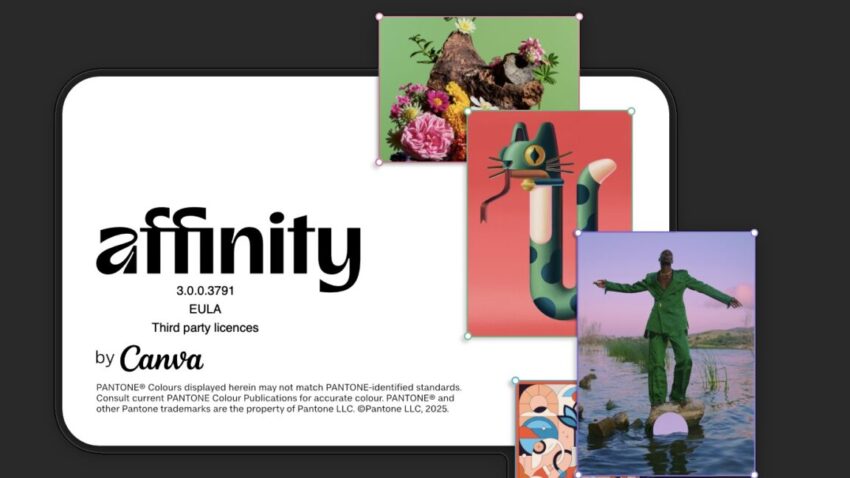
affinity s image-editing apps go freemium in Canva’s recent acquisition of Affinity has led to significant changes in the landscape of graphic design software, particularly with the introduction of a new unified app.
affinity s image-editing apps go freemium in
Background on the Acquisition
In early 2024, Canva, a leading graphic design platform, acquired Affinity, a suite of image-editing and publishing applications known for their one-time purchase model. This acquisition raised numerous questions about the future of Affinity’s products, especially given Canva’s emphasis on subscription-based services. Users of Affinity have long appreciated the ability to purchase software outright, avoiding the recurring costs associated with subscription models like those offered by Adobe.
Affinity’s suite includes three primary applications: Affinity Photo, Affinity Designer, and Affinity Publisher. Each of these applications has garnered a loyal user base, particularly among professionals and hobbyists who prefer a more traditional software ownership model. The acquisition prompted concerns about how Canva would integrate these applications into its ecosystem, especially regarding the philosophical differences between the two companies—most notably, Affinity’s skepticism towards generative AI technologies compared to Canva’s enthusiastic adoption of these innovations.
The New Unified Affinity App
This week, Canva unveiled its answer to the integration challenges: a new application called “Affinity by Canva.” This app combines the core functionalities of the three Affinity applications into a single platform, which is free to use for anyone with a Canva user account. This move is significant, as it marks a shift towards a more accessible model for users who may have previously hesitated to adopt subscription-based software.
Core Features and Accessibility
The unified Affinity app retains the essential features that users have come to expect from Affinity’s individual applications. Users can access powerful image editing, vector design, and publishing tools without any upfront costs. This accessibility is particularly beneficial for students, freelancers, and small business owners who may be deterred by the high costs associated with traditional software licenses.
While the core features are available for free, Canva has opted to lock certain advanced functionalities, particularly those related to generative AI, behind its existing subscription plans. These plans are priced at $120 per year for individual users. This approach aligns with Canva’s business model, which has successfully monetized its platform through a combination of free and premium offerings.
Generative AI Features
Generative AI has become a hot topic in the design world, with many companies leveraging this technology to enhance their offerings. Canva has been at the forefront of this trend, integrating AI capabilities into its platform to streamline design processes and improve user experience. However, Affinity has historically taken a more cautious approach to AI, emphasizing the importance of human creativity in the design process.
The decision to gate AI features behind a subscription model may be seen as a compromise between these two philosophies. While existing Affinity users can continue to use the core functionalities without incurring costs, those interested in exploring AI-driven features will need to subscribe. This may create a divide among users, with some opting for the free version while others invest in the subscription for enhanced capabilities.
Implications for Affinity Users
The introduction of the unified Affinity app is likely to have mixed implications for existing users of Affinity’s software. On one hand, the free availability of core features is a welcome change for many. Users who have previously invested in Affinity applications may appreciate the opportunity to access a broader range of tools without additional costs. This could potentially attract new users who were previously hesitant to invest in software that requires a one-time payment.
On the other hand, the shift to a freemium model may raise concerns among long-time Affinity users who value the predictability of a pay-once-own-forever model. The introduction of subscription-based features could lead to uncertainty about the future of the software. Users may worry about how Canva will define the boundaries between free and premium features, especially as the platform evolves and new functionalities are introduced.
Stakeholder Reactions
The reaction to Canva’s acquisition and the launch of the unified Affinity app has been varied among stakeholders. Many users have expressed cautious optimism about the changes, appreciating the accessibility of the new app while remaining wary of the implications of a subscription model. Some users have taken to social media to voice their concerns, emphasizing the importance of maintaining a clear distinction between free and premium features.
Industry analysts have also weighed in on the acquisition, noting that Canva’s move to integrate Affinity’s applications could strengthen its position in the graphic design market. By offering a comprehensive suite of tools that cater to both casual users and professionals, Canva may be able to attract a wider audience and further solidify its dominance in the industry.
Future Prospects
As Canva continues to develop the Affinity brand, the future of the unified app remains to be seen. The company has indicated that it plans to regularly update the software, introducing new features and improvements based on user feedback. This commitment to ongoing development could help alleviate some concerns among users who fear that the transition to a freemium model may lead to stagnation.
However, the success of the unified Affinity app will ultimately depend on how well Canva balances the needs of its diverse user base. Striking the right balance between free and premium offerings will be crucial in maintaining user trust and satisfaction. If Canva can successfully navigate these challenges, it may be able to create a compelling product that appeals to both existing Affinity users and new customers.
Conclusion
The launch of the unified Affinity app represents a significant shift in the graphic design software landscape. While the free availability of core features is a positive development for many users, the introduction of subscription-based AI functionalities raises important questions about the future of the Affinity brand. As Canva continues to integrate its offerings, users will need to remain vigilant about how these changes impact their experience and the tools they rely on for their creative work.
Ultimately, the success of the unified Affinity app will hinge on Canva’s ability to balance innovation with user needs, ensuring that the platform remains accessible and valuable to all.
Source: Original report
Was this helpful?
Last Modified: October 31, 2025 at 3:36 am
2 views















